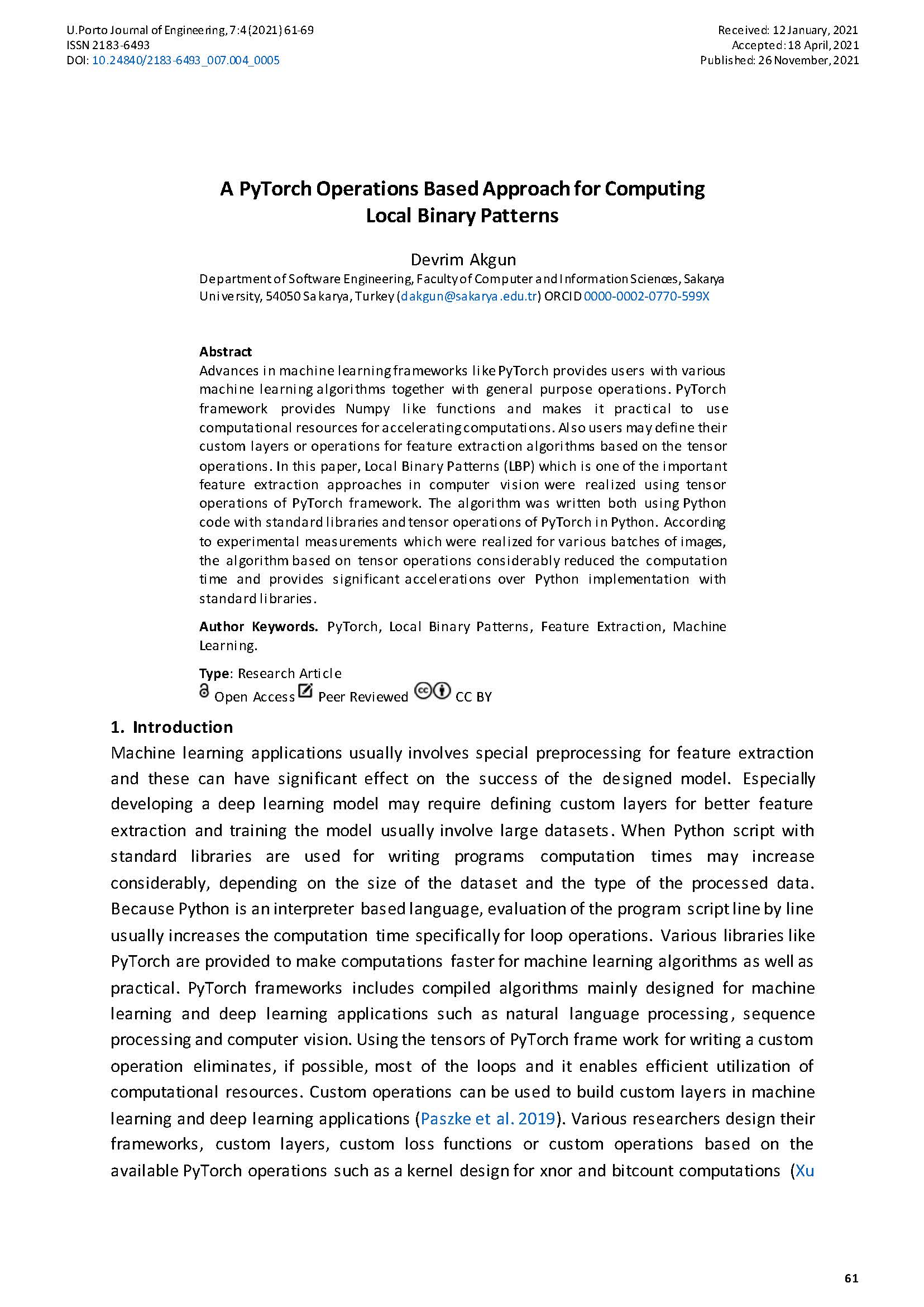A PyTorch Operations Based Approach for Computing Local Binary Patterns
Main Article Content
Abstract
Advances in machine learning frameworks like PyTorch provides users with various machine learning algorithms together with general purpose operations. PyTorch framework provides Numpy like functions and makes it practical to use computational resources for accelerating computations. Also users may define their custom layers or operations for feature extraction algorithms based on the tensor operations. In this paper, Local Binary Patterns (LBP) which is one of the important feature extraction approaches in computer vision were realized using tensor operations of PyTorch framework. The algorithm was written both using Python code with standard libraries and tensor operations of PyTorch in Python. According to experimental measurements which were realized for various batches of images, the algorithm based on tensor operations considerably reduced the computation time and provides significant accelerations over Python implementation with standard libraries.
Downloads
Article Details

This work is licensed under a Creative Commons Attribution 4.0 International License.
Authors who publish with this journal agree to the following terms:
- Authors retain copyright and grant the journal right of first publication with the work simultaneously licensed under a Creative Commons Attribution License that allows others to share the work with an acknowledgement of the work's authorship and initial publication in this journal.
- Authors grant the journal the rights to provide the article in all forms and media so the article can be used on the latest technology even after publication and ensure its long-term preservation.
- Authors are able to enter into separate, additional contractual arrangements for the non-exclusive distribution of the journal's published version of the work (e.g., post it to an institutional repository or publish it in a book), with an acknowledgement of its initial publication in this journal.
- Authors are permitted and encouraged to post their work online (e.g., in institutional repositories or on their website) prior to and during the submission process, as it can lead to productive exchanges, as well as earlier and greater citation of published work (See The Effect of Open Access).

